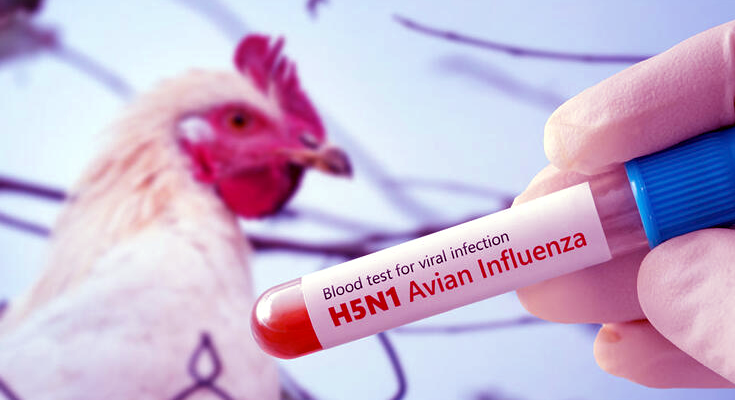A recent study led by scientists at Scripps Research has raised concerns over a single mutation in the H5N1 “bird flu” virus that could enhance its ability to bind to human cells, potentially increasing the risk of human-to-human transmission. The research, published in Science on December 5, 2024, highlights the need for close monitoring of the H5N1 virus as it evolves.
Although there have been no confirmed cases of H5N1 transmission between humans, the virus has infected humans through direct contact with infected animals, including birds and dairy cows. Public health officials have expressed concern that the virus could evolve to transmit more efficiently between humans, leading to a potential pandemic.
The H5N1 virus typically infects animals through receptors containing sialic acid on their cell surfaces. These receptors are common in birds, but the virus can evolve to recognize similar receptors in humans. A single mutation in the hemagglutinin protein, responsible for the virus’s attachment to cells, could shift its binding preference to human-type receptors, as seen in the study.
The research team focused on the H5N1 2.3.4.4b strain, which was involved in the first human infection linked to a bovine H5N1 virus in the U.S. A key finding was that a mutation in the hemagglutinin protein, known as Q226L, significantly improved the virus’s ability to bind to human-type receptors.
While the mutation raises alarms, the study does not suggest that the virus is currently capable of human-to-human transmission. Other genetic changes would likely be required for that to occur. Nonetheless, scientists stress the importance of continuing to track such mutations as the virus evolves.
Scripps Research experts emphasize that monitoring H5N1 and similar viruses will be crucial for early detection of any changes that could lead to increased transmissibility. Although there is no immediate cause for alarm, the research underscores the need for ongoing surveillance to stay ahead of potential public health risks.




